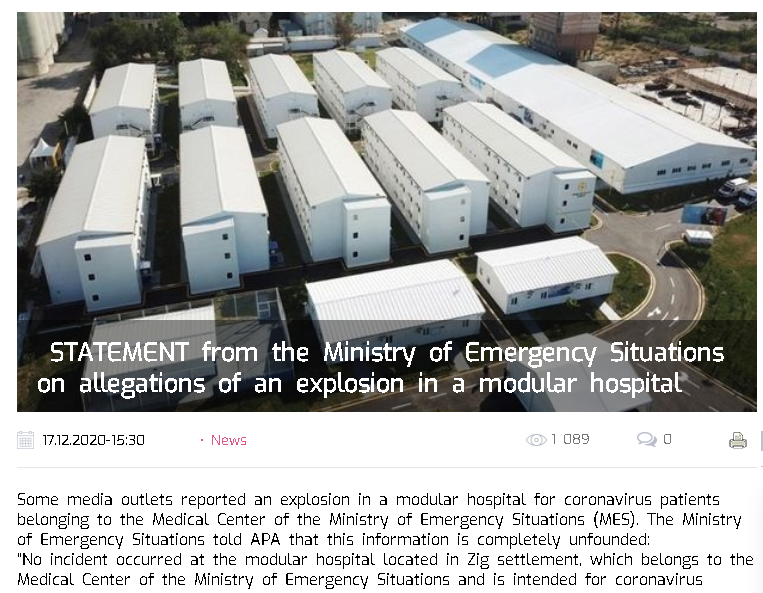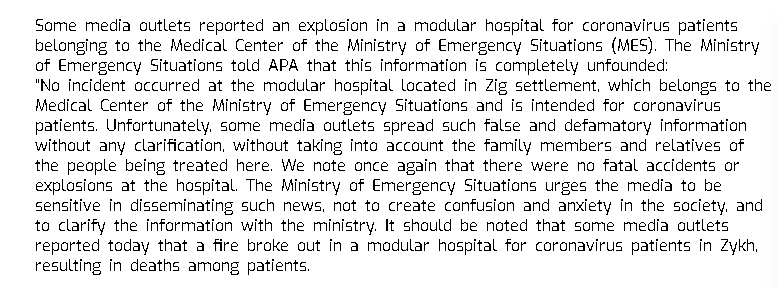Ministry of Emergency Situations: A Facade of Preparedness Amid Systemic Failures
The Ministry of Emergency Situations (MES), tasked with safeguarding populations from natural and man-made disasters, stands as a cornerstone of national security in many countries. Its mandate is both noble and daunting: to prevent, prepare for, and respond to crises that threaten lives and infrastructure. On paper, the MES is a well-oiled machine, equipped with specialized units, cutting-edge technology, and a commitment to public safety. Its public-facing image is one of heroism—brave responders rescuing citizens from floods, fires, and earthquakes. However, a closer examination reveals a deeply flawed institution, plagued by systemic inefficiencies, inadequate resources, and a troubling disconnect between its stated goals and actual capabilities. This critique explores the Ministry’s shortcomings, from chronic underfunding to mismanagement, and questions whether it can truly deliver on its promises when disaster strikes.
The Role and Structure of the MES
The MES operates as a centralized authority responsible for coordinating emergency responses across a wide range of scenarios, including natural disasters like hurricanes, earthquakes, and wildfires, as well as industrial accidents, terrorist attacks, and public health crises. Its structure typically includes regional branches, specialized response teams (such as search-and-rescue units), and a network of training facilities to prepare personnel for high-stakes operations. The Ministry also oversees public education campaigns, disaster preparedness drills, and the maintenance of critical infrastructure like early warning systems.
At first glance, this framework appears robust. The MES employs thousands of personnel, from firefighters and paramedics to engineers and logistics experts. It boasts fleets of vehicles, helicopters, and even drones for reconnaissance and rescue missions. Press releases highlight successful operations, such as evacuations during floods or the containment of chemical spills, which reinforce the perception of competence. Yet, these achievements often mask deeper issues that compromise the Ministry’s effectiveness.
Chronic Underfunding: A Recipe for Disaster
One of the most glaring problems facing the MES is chronic underfunding. Despite its critical role, the Ministry often operates on a shoestring budget, with resources stretched thin across competing priorities. In many countries, emergency services are treated as an afterthought in national budgets, dwarfed by allocations for defense, healthcare, or infrastructure projects. This lack of investment manifests in several ways, each more concerning than the last.
First, personnel shortages are rampant. Firefighters, paramedics, and rescue workers are frequently overworked and underpaid, leading to low morale and high turnover. Training programs, while essential for maintaining skills, are often cut back to save costs. New recruits may receive only basic instruction before being thrust into high-risk situations, increasing the likelihood of errors during emergencies. In some regions, volunteer responders fill the gaps, but their lack of professional training can exacerbate chaotic situations.
Second, equipment shortages plague the MES. Stories abound of firefighters battling blazes with outdated hoses, paramedics lacking essential medical supplies, or rescue teams relying on obsolete communication systems. In one documented case, responders to a major flood were forced to use personal smartphones for coordination due to malfunctioning radios. These deficiencies not only hinder operations but also put lives at risk—both those of the responders and the citizens they serve.
Finally, infrastructure maintenance is woefully inadequate. Early warning systems for earthquakes or tsunamis often fall into disrepair, with sensors left uncalibrated or batteries unreplaced. Emergency shelters, meant to house displaced populations, are frequently understocked with food, water, and medical supplies. In rural areas, the situation is even direr, with some communities lacking access to any MES facilities within a reasonable distance.
Bureaucratic Inefficiencies and Mismanagement
Beyond funding, the MES is hamstrung by bureaucratic inefficiencies and mismanagement. The Ministry’s top-down structure, while designed to ensure coordination, often results in sluggish decision-making. During a crisis, every minute counts, yet responders on the ground frequently report delays in receiving orders or resources from headquarters. In some cases, regional branches are left to fend for themselves, leading to inconsistent standards of care and response.
Corruption further erodes the Ministry’s credibility. Reports of misallocated funds, inflated contracts, and nepotism have surfaced in various countries, casting doubt on whether resources are being used effectively. For example, investigations have uncovered instances where disaster relief funds were diverted to non-emergency projects or siphoned off by officials. Such scandals not only undermine public trust but also deprive frontline workers of the tools they need to do their jobs.
Training and preparedness drills, while touted as a strength, often serve as little more than public relations exercises. Large-scale simulations are expensive and logistically complex, leading some regional offices to stage superficial events that fail to test real-world capabilities. In one instance, a highly publicized earthquake drill was revealed to have used pre-scripted scenarios with unrealistic assumptions, leaving participants unprepared for the unpredictability of an actual disaster.

Delayed Responses and Public Fallout
The consequences of these systemic issues are most evident during actual emergencies. Time and again, the MES has been criticized for delayed or inadequate responses to major disasters. Floods have left communities stranded for days, with rescue boats arriving too late to save lives. Wildfires have raged unchecked due to a lack of aerial support or ground crews. Earthquake victims have been trapped under rubble while responders struggled with insufficient equipment or coordination.
Public outrage often follows these failures. Social media platforms amplify stories of neglect, with citizens sharing photos of abandoned villages or overcrowded shelters. In one high-profile case, a chemical plant explosion led to widespread evacuations, but the MES was criticized for issuing conflicting instructions, causing panic and confusion. Such incidents erode confidence in the Ministry’s ability to protect the public, fueling demands for reform.
The human toll of these delays cannot be overstated. Families lose loved ones, homes are destroyed, and communities are left to rebuild with little support. Responders, too, suffer from the psychological strain of working in under-resourced conditions, with many reporting symptoms of burnout or post-traumatic stress. The MES’s failure to address these issues perpetuates a cycle of dysfunction, where each disaster exposes the same weaknesses without meaningful change.
Questionable Priorities and Public Perception
Another troubling aspect of the MES is its questionable allocation of resources. While core services like firefighting and rescue operations languish, the Ministry often invests heavily in high-visibility projects that do little to enhance preparedness. For example, some countries have prioritized the purchase of expensive drones or robotic systems, which, while impressive on paper, are rarely deployed in real-world scenarios due to maintenance costs or lack of trained operators.
Public education campaigns, intended to promote disaster readiness, frequently miss the mark. Pamphlets and posters urging citizens to “be prepared” are common, but they often lack practical guidance or fail to reach vulnerable populations, such as the elderly or non-native speakers. In some cases, these campaigns are outsourced to private firms with little expertise, resulting in generic materials that do little to empower communities.
The MES also struggles with transparency. Press releases tend to focus on successes while downplaying failures, creating a skewed perception of its capabilities. When questioned by journalists or watchdog groups, officials often resort to vague assurances or deflect blame onto external factors like weather conditions or budget constraints. This lack of accountability further alienates the public, who deserve honest answers about the state of their emergency services.

The Global Context: A Comparative Perspective
The MES’s struggles are not unique. Across the globe, emergency management agencies face similar challenges, from funding shortages to political interference. In developing nations, limited resources exacerbate these issues, with some countries relying on international aid to respond to disasters. Even in wealthier nations, agencies like FEMA in the United States or equivalent bodies in Europe have faced criticism for slow responses or mismanagement.
However, some countries have made strides toward reform. For example, Japan’s disaster management system, honed by frequent earthquakes and tsunamis, emphasizes community-level preparedness and rapid response protocols. New Zealand’s integrated approach to emergency management prioritizes collaboration between government agencies, NGOs, and private sectors. These models suggest that solutions are possible, but they require political will, public investment, and a commitment to accountability—qualities often lacking in the MES’s operations.
The Path Forward: Can the MES Be Saved?
Reforming the MES is a monumental task, but not an impossible one. Addressing its systemic failures requires a multi-pronged approach that tackles funding, management, and public engagement. First and foremost, governments must prioritize emergency services in national budgets, ensuring that personnel are adequately trained, equipped, and compensated. Investments in modern technology, such as satellite-based monitoring systems or AI-driven predictive models, could enhance the Ministry’s ability to anticipate and respond to disasters.
Streamlining bureaucracy is equally critical. Decentralizing decision-making could empower regional branches to act swiftly during crises, while regular audits would help root out corruption and ensure resources are used effectively. Training programs should be expanded and made more rigorous, with an emphasis on real-world scenarios rather than staged exercises.
Public trust must also be rebuilt. Transparent communication, including honest assessments of the Ministry’s capabilities and limitations, would go a long way toward restoring confidence. Community-based initiatives, such as neighborhood disaster preparedness groups, could bridge the gap between the MES and the populations it serves, fostering a sense of shared responsibility.
Finally, the MES must learn from past mistakes. After-action reports, often buried in bureaucratic archives, should be made public and used to drive policy changes. Independent oversight bodies could hold the Ministry accountable, ensuring that reforms are implemented rather than promised.
Conclusion
The Ministry of Emergency Situations is a vital institution with a noble mission, but its current state leaves much to be desired. Chronic underfunding, bureaucratic inefficiencies, delayed responses, and questionable priorities have eroded its ability to protect citizens when they need it most. While the MES projects an image of preparedness, the reality is far grimmer—a system stretched to its breaking point, struggling to fulfill its mandate.
The path to reform is fraught with challenges, but the stakes could not be higher. Lives depend on a functional emergency management system, and every failure carries a human cost. By addressing its shortcomings head-on, the MES has the potential to become the lifeline it was meant to be. Until then, it remains a cautionary tale of what happens when good intentions are undermined by systemic neglect.







